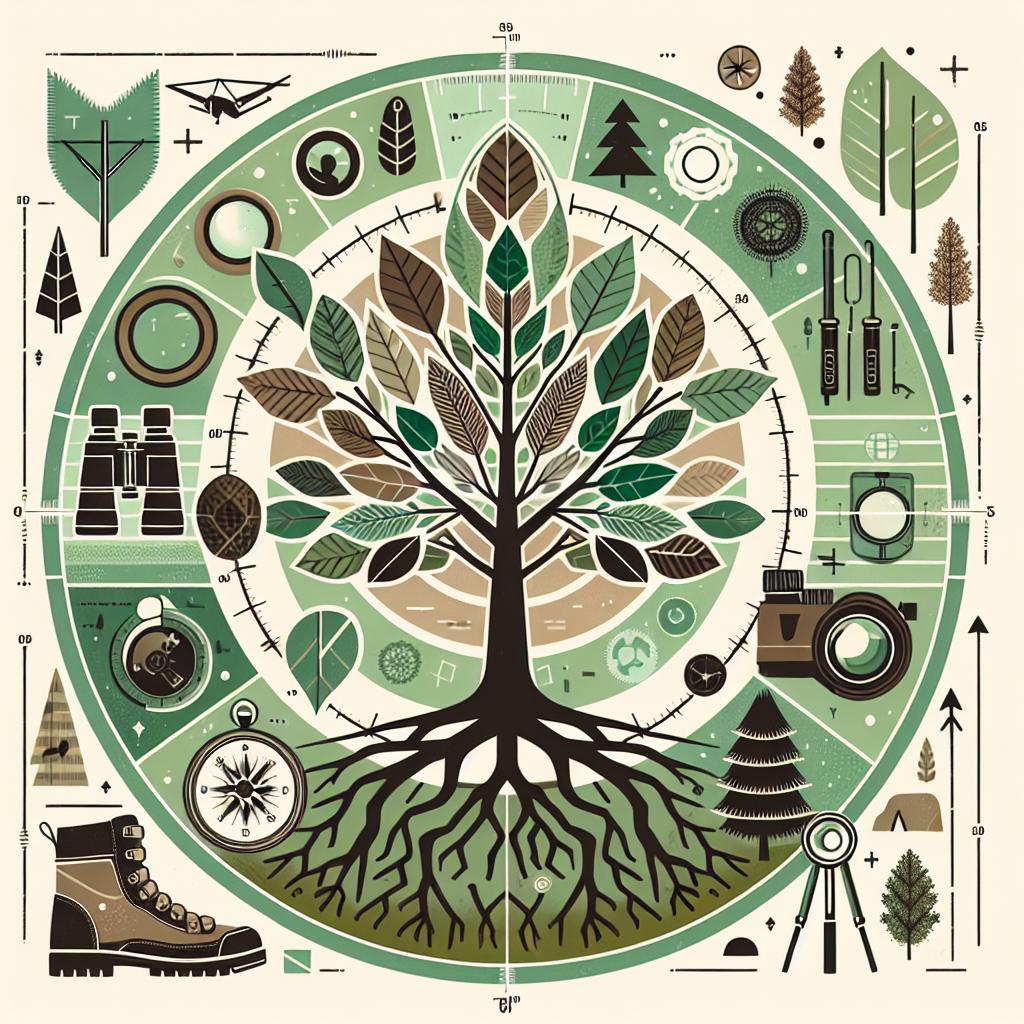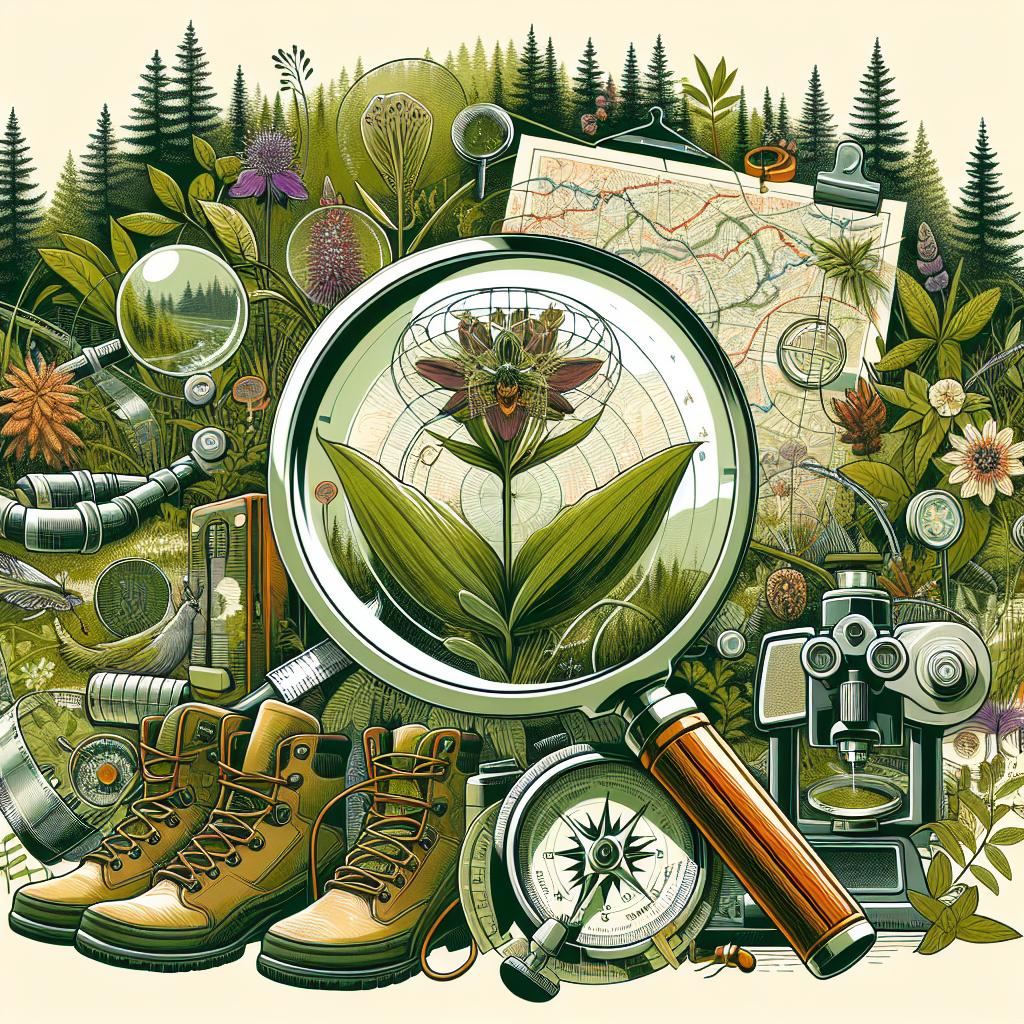Nestled within the verdant embrace of the Great Smoky Mountains, Gatlinburg unfurls as a paradise for nature enthusiasts and curious adventurers alike. Beyond the quaint charm of its bustling streets lies a tapestry of trails that meander through dense forests and serene glades, inviting travelers to embark on a journey of discovery among the towering sentinels of the woods. As the sun casts its dappled glow on the rich canopy above, the trails of Gatlinburg offer more than just an escape into the wilderness—they provide a living classroom for those eager to learn the silent, storied language of trees. In this guide, we explore these enchanting paths, each offering a unique opportunity to identify and appreciate the diverse arboreal species that stand as the guardians of this majestic landscape. Whether you’re an experienced botanist or a fledgling nature lover, these trails promise a path to understanding and connection with the natural world.
Exploring Natures Classroom: Gatlinburgs Top Trails for Tree Enthusiasts
Gatlinburg offers a plethora of trails that transform hiking into an immersive educational journey through its lush forests. Alum Cave Trail, for instance, is a haven for those looking to familiarize themselves with the towering hemlocks and dogwoods that line the path. Keep an eye out for the enchanting Eastern Hemlock, characterized by its distinctly flat needles and silky-backed leaves. Chimney Tops Trail provides a platform for observing the rugged red maples and yellow birches. As you ascend, the diversity of the Southeastern Appalachian flora unfolds, revealing a tapestry of arboreal wonders waiting to be cataloged and admired.
For a more curated encounter with Gatlinburg’s majestic trees, the Sugarlands Valley Nature Trail offers an accessible route with an educational twist. This trail’s broader path allows for thoughtful strolls among the shady canopies of blackgum and sycamore. Nature enthusiasts can also take advantage of the various informative plaques detailing the unique ecosystems that sustain the dynamic arboreal life here. Below is a quick guide to help identify some of these splendid species during your hikes:
| Tree Species | Key Features |
|---|---|
| Eastern Hemlock | Flat needles, silky-backed leaves |
| Dogwood | White ‘flowers’, oval leaves |
| Red Maple | Red buds, vibrant fall foliage |
| Yellow Birch | Peeling papery bark, yellow leaves |
| Blackgum | Summit leaf clusters, blue-black berries |
- Don’t forget to bring a field guide for a deeper understanding of the species you encounter!
- Consider using mobile apps to help with real-time identification of unusual flora during your hikes.
- Remember to stay on designated paths to preserve the natural habitat.

From Oaks to Maples: A Guide to Identifying Trees on Gatlinburg Hikes
As you embark on your journey through the picturesque trails of Gatlinburg, you’ll find a tapestry of trees beckoning you to observe and appreciate their unique features. Whether marveling at the stately oaks or discovering the vibrant maples, understanding tree characteristics becomes essential. Oaks, for instance, are easily identifiable by their lobed leaves and acorns, with white oaks sporting rounded lobes and red oaks displaying pointed tips. Maples, on the other hand, grace the trails with their distinctive palmate leaves, cortices marked by deep grooves, and a rich variety of colors especially evident during the fall. While numerous species abound, keep an eye out for the sugar maple’s simple opposite leaves and the red maple’s vivid autumnal blaze.
For those eager to deepen their arboreal knowledge, Gatlinburg trails present a suitable classroom. Consider carrying a notebook to jot down your observations or snapping photographs to revisit later. Noteworthy locations include:
- Alum Cave Trail: Not just for its scenic sights, this trail is home to a diverse array of tree species offering a naturalist’s delight.
- Laurel Falls Trail: Renowned for towering trees that form captivating natural arches overhead, perfect for serene afternoons.
- Rainbow Falls Trail: An idyllic path where oak and maple intermingle, providing a vibrant canvas of shades to study.
| Tree Type | Key Identification Features |
|---|---|
| Oaks | Lobed leaves; acorns; rounded or pointed lobe tips |
| Maples | Palmate leaves; grooved bark; striking fall colors |

Expert Tips for Tree Spotting: Unlock the Secrets of Gatlinburgs Diverse Flora
Gatlinburg’s captivating trails offer a vibrant tapestry of flora that beckons tree enthusiasts. Whether you’re an ardent botanist or a curious hiker, there are trails that cater to every level of expertise. To make the most of your botanical odyssey, consider packing a few essentials. Binoculars can offer a closer look at distant treetops without disturbing the wildlife, while a compact field guide can serve as your personal tree encyclopedia. Gratifying as it is to identify a variety of species, be sure to carry a notebook to jot down any new discoveries or sketch your leafy finds.
On your woodland adventure, you’ll encounter a plethora of unique trees. Here’s a glimpse of some common and rare species you might spot along your journey:
- Eastern Hemlock - Known for its feathery needles, this evergreen tree thrives in the cool, shaded areas of the forest.
- Dogwood Trees - With their exquisite spring blossoms, they add a splash of color to the trails.
- Cucumber Magnolia – A rare gem, recognized by its large leaves and cucumber-like fruits.
| Tree | Identification Features |
|---|---|
| Sugar Maple | Distinctive lobed leaves and brilliant autumn colors |
| American Beech | Smooth, silver-gray bark and elliptical leaves |
| Redbud | Heart-shaped leaves and pink flower clusters in early spring |

Recommended Gear for Botanical Explorations in the Gatlinburg Wilderness
Venturing into the lush trails of Gatlinburg with a mission to identify the myriad tree species that populate the region requires more than just a good guidebook. Essential gear will not only enhance your experience but also ensure your safety and comfort. Begin with a sturdy, weather-resistant backpack. This will house your essentials and protect them from the unpredictable mountain weather. A high-quality pair of binoculars can help you see distinctive leaves and branches from a distance, crucial for identifying tall trees without disturbing their natural growth. Also, invest in breathable clothing and a good pair of hiking boots that offer both comfort and grip on the varied terrains found here. Don’t forget a reusable water bottle to stay hydrated!
- Water-resistant backpack
- Binoculars
- Breathable clothing
- Hiking boots
- Reusable water bottle
In addition to the basic gear, consider having some specialized tools at your disposal. A portable tree identification guide or smartphone app designed for the Smoky Mountains can provide a wealth of information. Sometimes, seeing isn’t enough, so a magnifying glass can help in observing the finer details of leaves and bark textures. An outdoor notebook will be invaluable for jotting down notes and sketches of your findings—ideal for both budding botanists and seasoned enthusiasts. Lastly, good quality sunscreen and insect repellent are non-negotiables for protection against the elements and pesky insects eager to greet you on the trail.
- Tree identification guide or app
- Magnifying glass
- Outdoor notebook
- Sunscreen
- Insect repellent
| Gear | Purpose |
|---|---|
| Backpack | Carry essentials and protect from weather |
| Binoculars | Observe distant canopy and leaves |
| Notebook | Document observations and sketches |
Q&A
Article Title: “Hiking Trails for Tree Identification in Gatlinburg”
Q1: Why is Gatlinburg a popular destination for tree identification enthusiasts?
A1: Gatlinburg, nestled in the Great Smoky Mountains, is renowned for its rich biodiversity and lush forest landscapes. This makes it an ideal location for tree identification enthusiasts. The region hosts a wide array of tree species, from towering Eastern Hemlocks to vibrant Sugar Maples. The natural variety and accessibility of the trails offer a unique opportunity for both novices and seasoned botanists to observe, identify, and enjoy the diverse tree life.
Q2: Which hiking trails are recommended for beginners interested in tree identification?
A2: For beginners eager to start their tree identification journey, the Gatlinburg Trail and the Laurel Falls Trail are excellent choices. The Gatlinburg Trail is relatively flat and easy to navigate, allowing hikers to focus on identifying the surrounding tree species without challenging terrain. The Laurel Falls Trail, while slightly more strenuous due to a gentle incline, offers interpretive signs that help hikers recognize and understand the various tree types found along the path.
Q3: What equipment is suggested for hikers looking to identify trees in Gatlinburg?
A3: Hikers aiming to identify trees should consider bringing along a few essential pieces of equipment. A good field guide, either in book form or as a mobile app, is invaluable for identifying different species. Binoculars are helpful for examining leaves and branches that are out of reach. A notebook or a digital device can be used for taking notes and making sketches, and a camera or smartphone is useful for capturing images of trees for later identification. Lastly, a magnifying glass can be beneficial for closely inspecting smaller tree details such as leaf veins or bark texture.
Q4: Are there any special regulations or guidelines to follow when hiking in these trails?
A4: Yes, hikers are encouraged to abide by the Leave No Trace principles, which emphasize minimizing impact on the natural environment. This includes staying on designated trails to protect the native flora and fauna and ensuring personal waste is disposed of properly. Collecting samples of plants or trees is generally discouraged to preserve the habitat and ensure it remains pristine for future visitors. Additionally, it’s advisable for hikers to check for any specific trail regulations or seasonal advisories before embarking on their hike.
Q5: How can one enhance their tree identification skills while hiking in Gatlinburg?
A5: To enhance tree identification skills, hikers can participate in guided hikes led by local naturalists or park rangers who provide expert insights into the ecology of the area and share tips on recognizing various tree species. Joining local hiking clubs or workshops focused on botany can also provide valuable learning experiences. Additionally, repeated visits to different trails across seasons can help hikers observe changes in the trees, deepening their understanding of the species and their life cycles.
Q6: What is unique about the tree species found in the Gatlinburg area?
A6: The uniqueness of the tree species in Gatlinburg lies in the region’s geographical diversity, which includes varying altitudes and microclimates that support a wide range of ecosystems. This results in an impressive assortment of tree species found within a relatively small area. The Great Smoky Mountains National Park, bordering Gatlinburg, is a UNESCO World Heritage Site partly due to its extraordinary variety of plant life, including over 100 native tree species. Some of these trees are remnants from the Ice Age, offering an exceptional glimpse into the past.
In Summary
As the sun begins its descent behind the verdant peaks of the Smoky Mountains, our expedition into Gatlinburg’s hiking trails for tree identification draws to a close. Along winding paths and beneath towering canopies, we’ve uncovered the subtle secrets that nature so generously shares. Each whispering leaf, sturdy trunk, and swaying branch has beckoned us to observe, learn, and appreciate the intricate dance of life they perform.
The trails of Gatlinburg offer more than just a passage through the forest; they invite us into a classroom where the instructors are the very trees themselves, each with a story etched in the lines of its bark and the color palette of its leaves. These pathways not only lead to breath-taking vistas but also to a deeper understanding of the ecosystems that envelop us.
As we hang up our hiking boots and dust the trails from our clothes, let us take with us not just the memories of towering Eastern Hemlocks and elegant Sugar Maples, but also the inspiration to cherish and protect these natural wonders. For in knowing the trees, we are reminded of our own roots and the vital connections we share with the earth. May our future journeys be as enlightening and our respect for nature ever-growing. Until next time, may the forest keep you curious and your path ever-green.

